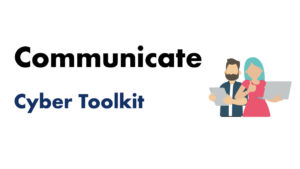Cyber resilience guidance
The first potential vulnerability when communicating online is the device not being securely setup.
Check with learners that they have taken these steps to reduce the risk of someone accessing and communicating with their device without permission:
- a screenlock that requires a passcode or biometric (face or fingerprint) to log in to stop unauthorised access (hacking)
- apple devices have a content filter, called communication safety in Messages, in their ‘screen time’ settings that blocks potentially nude content from children’s phones
Another potential vulnerability when communicating online is the accounts on the device or online platform not being secure enough and allowing others to use their device or contact them.
Check with learners that they have taken these steps on their apps to reduce the risk unwanted contact:
- they use device or platform security features, inlcuding password, biometrics or 2FA to ensure only they can access it
- they know how to use the settings and security features to set the platform up to only share information they are willing to share – this can reduce their ‘visibility’ and potentially reduce the chances of unwanted contact
- they can use the settings and security settings to control who is able to contact them, see/reply to their posts or direct message them on the platform
How to block and report contacts
Snapchat
How do I change my privacy settings on Snapchat?
FaceTime
When using devices or online platforms to communicate, learners should understand that online platforms and services, including apps, carry greater risk of being shared without permission as the messages and content on these is almost always stored on their server, which is the company’s computer, and not the child or young person’s device.
Should created content ever be shared with, or without, permission then learners should have the knowledge, skills and support to report and recover from the potential risks associated with this:
Whatsapp
How to block and report contacts
Snapchat
Snapchat Reporting Quick Guide
Adults can report concerns about unwanted contact to NSPCC
Children and young people can report concerns about unwanted contact to Childline


